On the Road is a weekday feature spotlighting reader photo submissions.
From the exotic to the familiar, whether you’re traveling or in your own backyard, we would love to see the world through your eyes.
We have birds and flowers and a trip to Amsterdam, should be a great week!
Also, we’re coming up on the holidays, so please send in your pics from when you were little so we can do a week or two of those before the holidays.
You can either submit your holiday pics as an OTR post or you can send the pictures to me as email attachments.
(click the image below for a bigger, non-blurry version of the schedule)
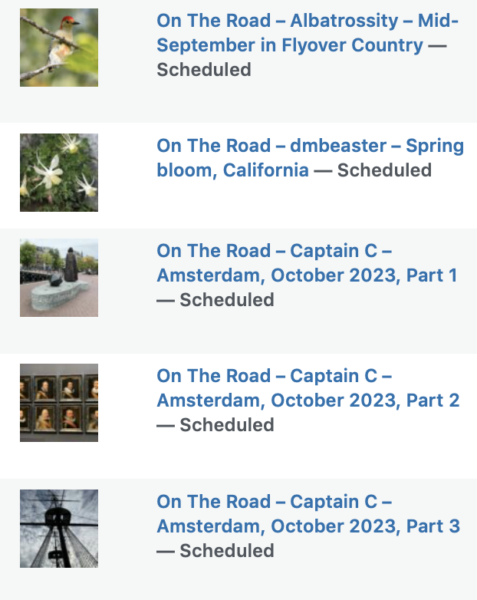
Albatrossity
Mid-September in Flyover Country is one of the finest times to be here. Decent temperatures, fall flowers in abundance, and, of course, bird migration all combine to make it a very pleasant interlude between hotter-than-holy-hell summers and icy wind-blasted winters. So here are some pics from September in my part of the galaxy. And some links to the three 2024 bird photo calendars I have created this year. Enjoy!
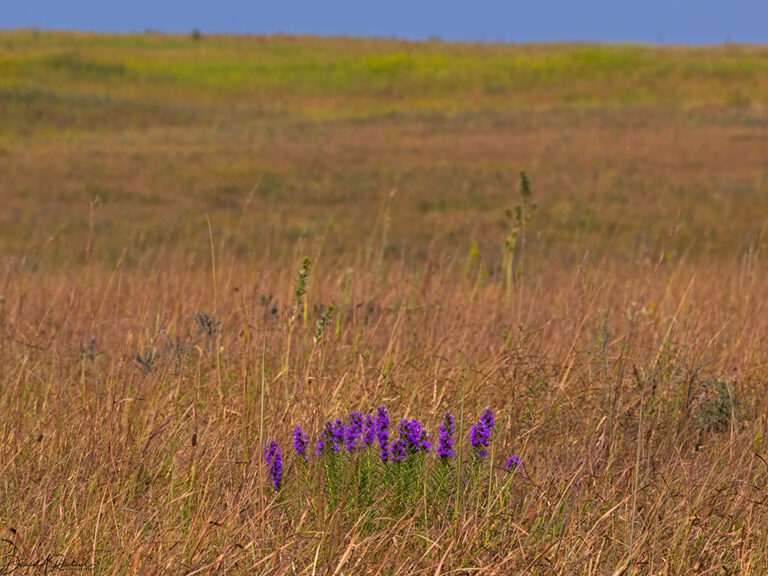
Liatris (Gayfeather) usually is done blooming by the end of August, but this patch had different ideas. Click here for larger image.
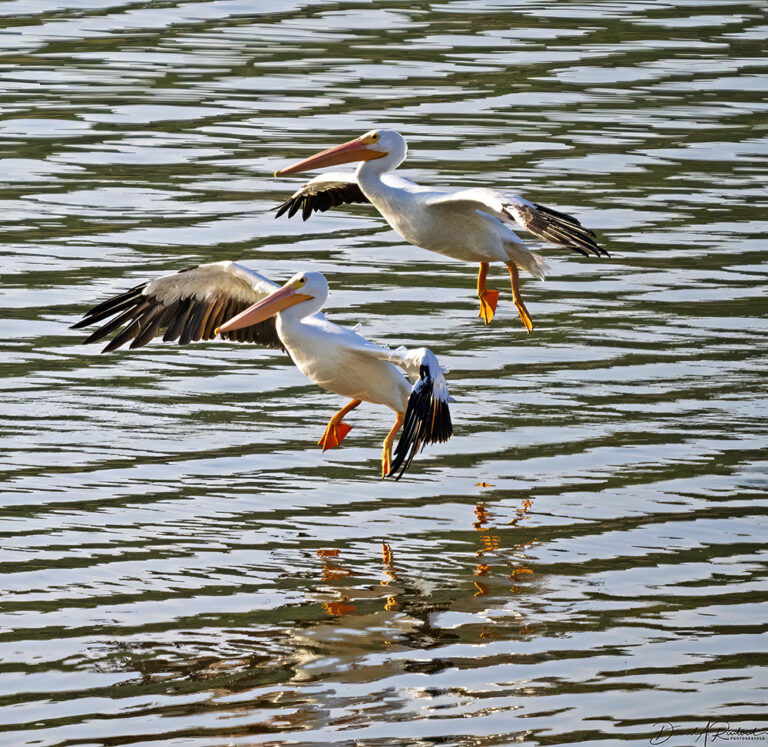
One of the more surprising birds coming through here in the spring and fall, American White Pelicans (Pelecanus erythrorhynchos) often elicit gasps from visitors who reside on the east or west coasts. And even many of the locals seem unaware that these majestic dinosaurs are here on the lakes, eating their fish. Click here for larger image.
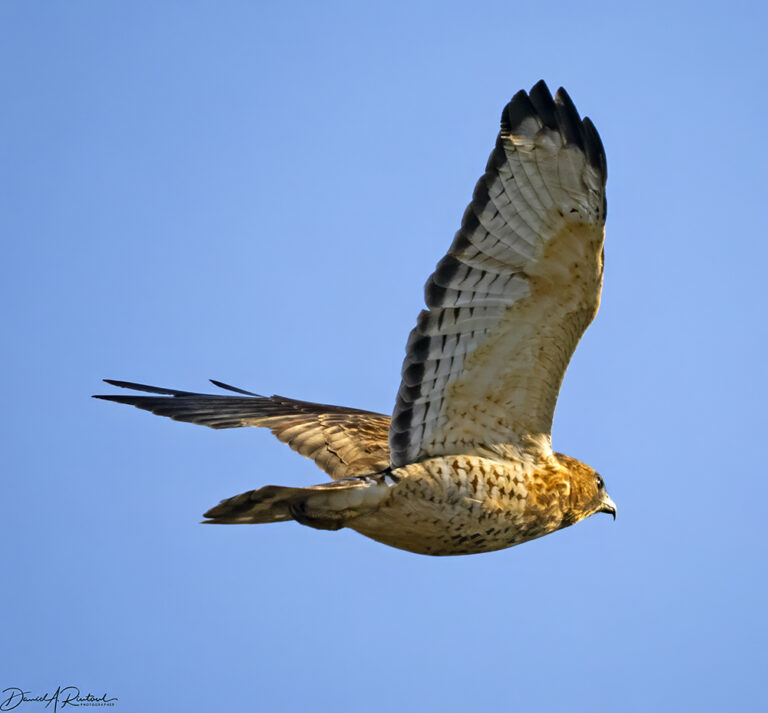
A long-distance migrant that used to be a rarity in these parts (although it is quite familiar to eastern birders), this Broad-winged Hawk (Buteo platypterus) was probably a local breeder. By now it is in Central or South America, and hopefully looking forward to coming back to the prairies in the springtime. Click here for larger image.
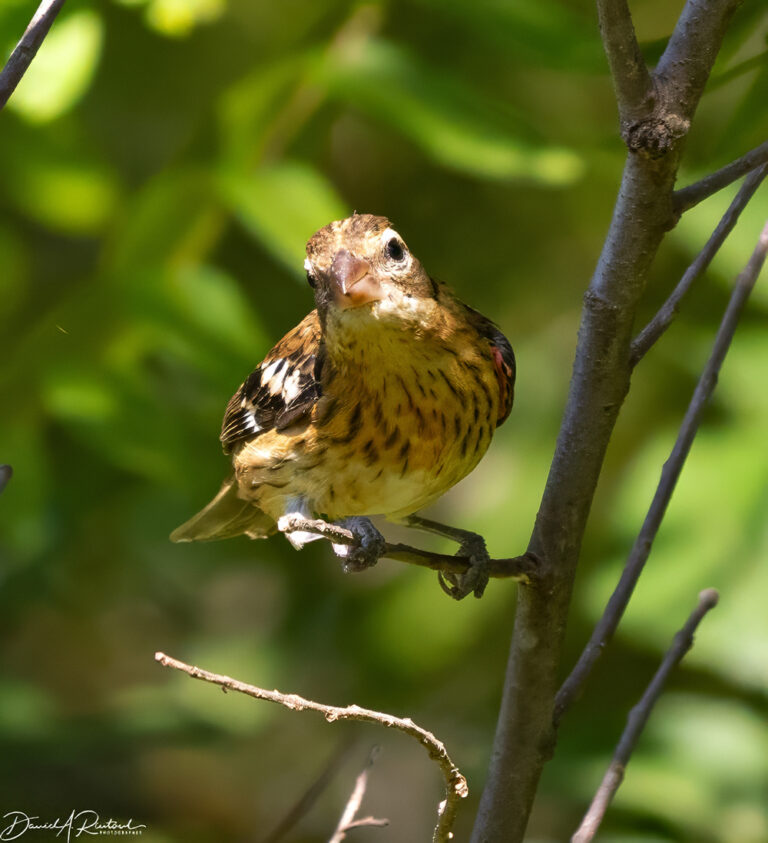
Another bird that is very familiar to eastern birders, but not common here, is the Rose-breasted Grosbeak (Pheucticus ludovicianus). This is a hatch-year bird, based on the streaky plumage, and a male, based on the hints of red visible in the central chest area and at the bend of the wing. Hopefully it too is safe in the tropics by now, and will return as a full-fledged rosy-chested male next spring. Click here for larger image.
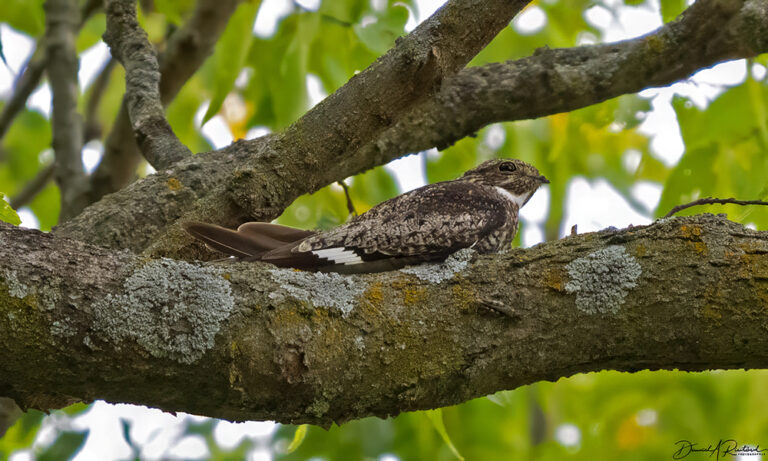
Another sign of our late-arriving cooler weather, this Common Nighthawk (Chordeiles minor) was foraging in broad daylight and landed on this branch near me. I have seen plenty of nighthawks, but I had never seen one plop down on a branch in the daytime before. And he was headed even further south than the birds above, for the winter season in central South America. Click here for larger image.
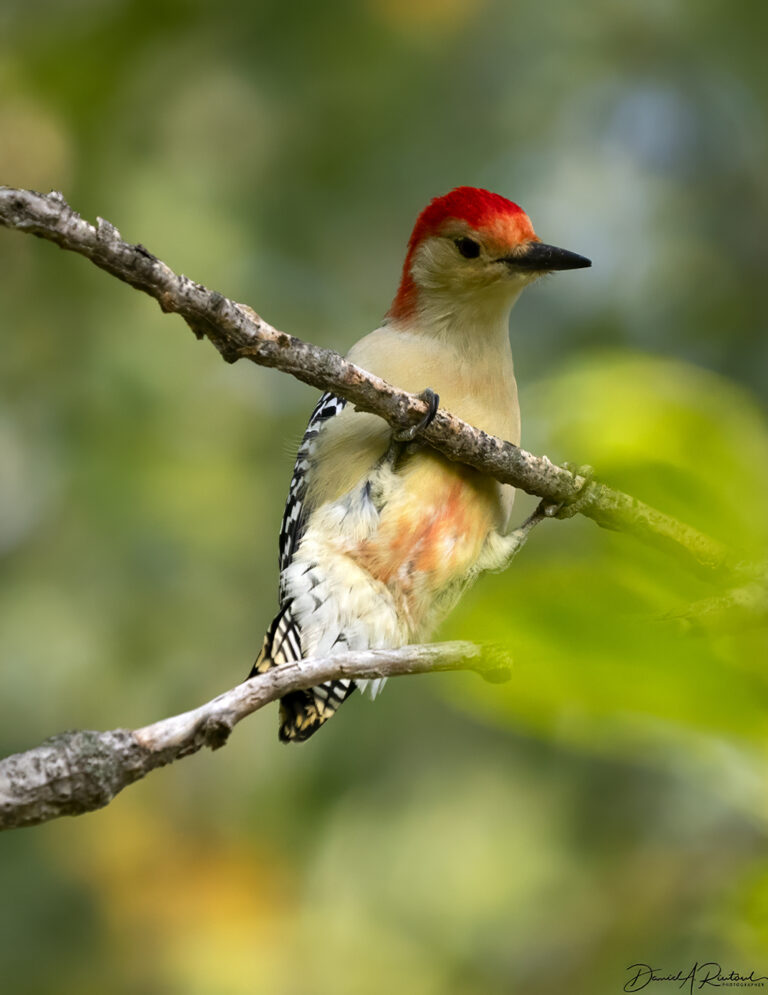
This is a stay-at-home bird, gracing backyards (and bird feeders) here year-round. The Red-bellied Woodpecker (Melanerpes carolinus) does not often show off that eponymous red belly, so I was happy to get these revealing shots! Click here for larger image.
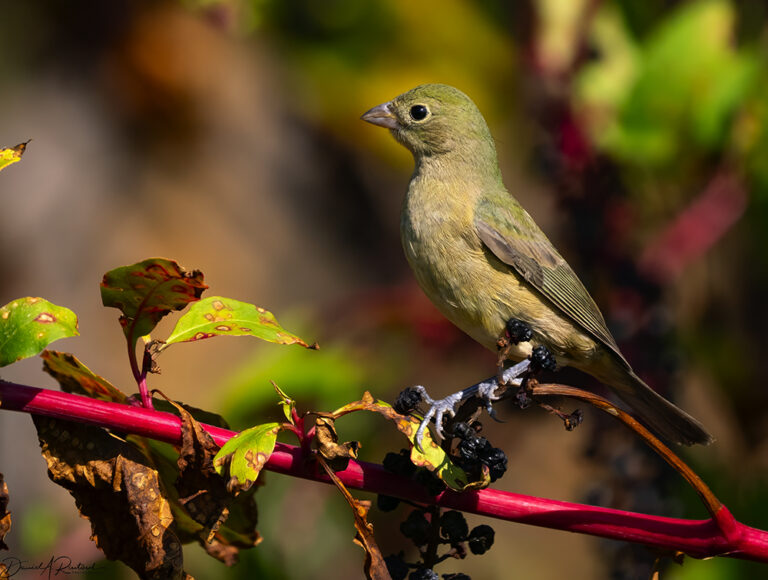
The local Painted Buntings (Passerina ciris) had a productive year in 2023; I saw plenty of youngsters like this one. And it had already found the pokeberries, so it was doing fine. Click here for larger image.

Flyover Country has many lovely birds, but for my money, none can beat the Scissor-tailed Flycatcher (Tyrannus forficatus). And September is a great time to see them, since they have freshly molted and are in fine feather for that southbound migration. Click here for larger image.
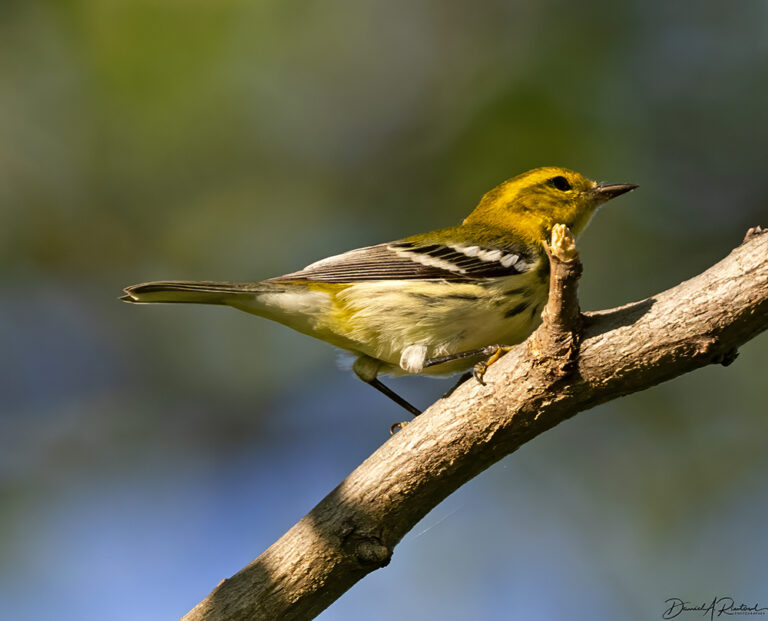
It’s easy to see how the Scissor-tailed Flycatcher got its name, but for this bird, in this plumage, it is a mystery. A Black-throated Green Warbler (Setophaga virens), showing nary a hint of a black throat or the color green. In fact, even in breeding plumage it is not very green (although it does have a black throat, at least). Click here for larger image.
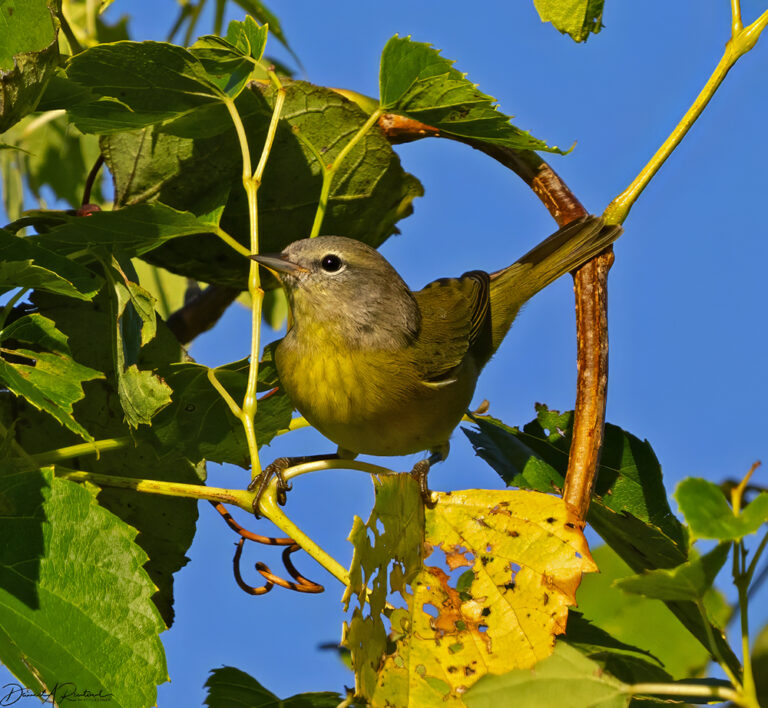
Finally, here’s a bird for which the name and the appearance seem maximally disconnected. It’s an Orange-crowned Warbler (Leiothlypis celata). Do you see the orange crown? No? Neither do I, although I have actually seen it once. The field guides usually contain sentences like “Crown with brownish-orange patch, usually concealed.” I think “usually concealed” should be replaced with “rarely revealed”, personally. Click here for larger image.

HinTN
Your tours through your patch of flyover country are always eloquent your photography is fabulous. Thanks, yet again. We intermittently see the grosbeaks on their sojourn south. Last year we had a big contingent, this year not so many.
There go two miscreants
The composition of that pelican picture is amazing! What a great shot!
SteveinPHX
Thanks for photos. I used to see many red-bellies when I lives East of the Mississippi. Not here in the desert.
Betty
Great way to start the day – beauty and education.
Peggy
Thank you for the beautiful images and commentary.
OzarkHillbilly
My week starts off on the Albatrossity foot. Thanx.
The Kropenhagen Interpretation
Yes, thank you for the photos.
Rob
Wonderful photos as always, Albatrossity. And you are right about the crown on the Orange-crowned Warbler, I rarely ever see it.
JoyceCB
I have driven many miles to see vagrant Scissor-tailed Flycatchers in Southern Ontario. They are magnificent birds.
NDVI
While I love your bird pictures, I’m always happy to see pictures of the prairie. I’m hoping to get out to the Konza this year to do some research.
Albatrossity
@NDVI: What area of prairie research are you in? The summer on Konza is always busy, with lots of folks from around the country coming here to do grassland ecology research.
Miss Bianca
Your photos never fail to awe and delight, and they are such a treat to start off Monday morning with. Thank you, Albatrossity!
mvr
These are all great. I can see why you like the scissor tail flycatcher. And the first two photos are very striking as images as well as content.
Thanks!
Madeleine
The water patterns make such a striking backdrop for the pelicans as well as such disrupted reflections.
Edit: as there goes . . . notes more gracefully at #2.
StringOnAStick
Lovely! It helps my weak birding skills to know that a few of the names are not exactly descriptive.
I’ve gotten into putting red pepper flavoured suet cakes out for those that like them, and to frustrate the squirrels. Mostly I see flickers on them but I get the occasional downy woodpecker. I love watching how all of them use their tail feathers as the move about on the trunk of our old Ponderosa pine.
Rob
@JoyceCB: They are worth driving many miles for!
frosty
I’ve been on eBird for awhile but I never clicked on the Science tab. The animated migration map of the Nighthawk that you linked to is amazing! I think my morning plans just got shot down in favor of diving down that rabbit hole.
Well, OK, there’s only 10 minutes of morning left now so I guess it will be the whole day’s plans.
Albatrossity
@frosty: Yes, one can waste many a morning looking at the data visualizations on eBird!
NDVI
@Albatrossity: If we get permissions we will be making satellite-like reflectance measurements off of the NEON flux tower there. We are interested to see if we can detect seasonal transitions in C3 and C4 plant cover in a way that we can carry up to space.
stinger
I love Mondays!
Great photo of the pelicans coming in for a landing, and that shot really points up, to me, how they are indeed dinosaurs!
Albatrossity
@NDVI: Cool! I hope you get it all squared away and get to spend some time on Konza this summer!
Mark von Wisco
That scissor-tailed flycatcher is a very striking bird.
Netto
I don’t know if we’re on a flyway for white pelicans where I live, but they sure are common. It’s always a treat after inclement weather has kept them on the lakes to see them exploring the first thermals of the breaking overcast, assembling a circling squadron, and soaring away together. (Congrats if you parsed that run-on sentence.)